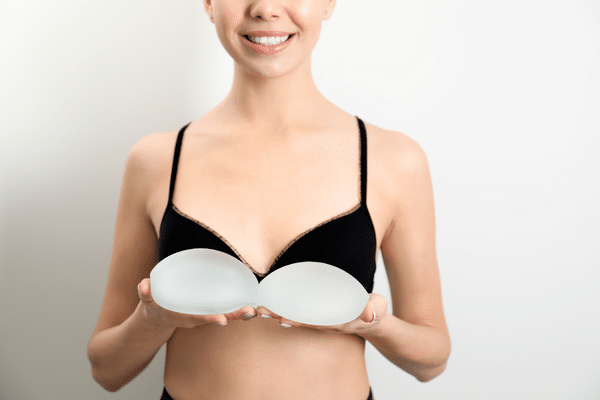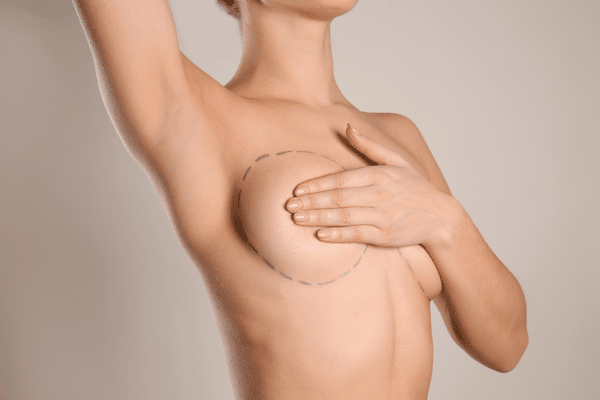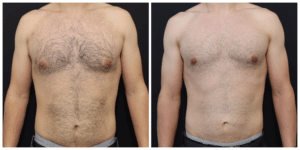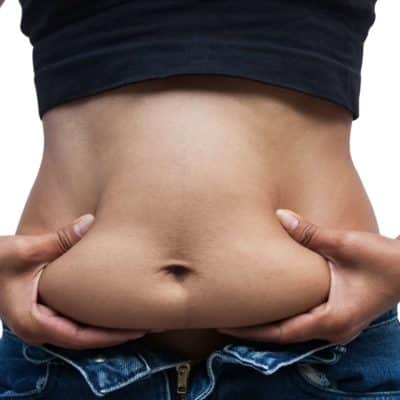Are You a Candidate for Male Liposuction?
In 2019, over 265,000 liposuction procedures were performed in America, and roughly 30,000 of those procedures were performed on men. While facial procedures like neck lifts and eyelid rejuvenations are still the most popular cosmetic surgeries for men, male liposuction consistently comes in at a close third and is slowly making its way toward the top.
With its near-instant ability to reshape the abdomen and other “problem areas” to its subtle, almost invisible scars, a liposuction procedure is an excellent procedure for men who just need one extra boost to top off their attractive physique.
If you’ve tried everything from a strict healthy diet to rigorous exercise regimens, and you still can’t seem to get rid of small pockets of stubborn fat, then liposuction for men may be just what you’re looking for. Use the following guide to find out if you might be a good candidate for male liposuction.
First, however, let’s define what the liposuction procedure is and what the procedure aims to do.
What Is Male Liposuction?
Liposuction surgery (also called “lipo”) is a cosmetic procedure that removes unwanted pockets of excess fat by using a cannula (thin hollow tube) to agitate the excess fat beneath the skin and suck it out. The procedure is safe, effective, and long-lasting as long as the patient maintains a healthy weight after their plastic surgery.
Male liposuction can be performed on many different areas of the body, including the:
- Abdomen
- Buttocks
- Flanks (“love handles”)
- Hips
- Thighs
- Calves
- Ankles
- Upper arms
- Chin/neck area
If you are interested in male liposuction, you can expect an outpatient procedure and a recovery period that will last several months. While most patients are able to return to work within several days, it may take one to two weeks before you can return to a regular exercise routine and up to three months to see all of the swelling go down. The majority of patients achieve their final results within three to six months after plastic surgery.
Who Is a Good Candidate for Male Liposuction?
This is the first question most people ask, and it’s a good one.
Most of us, at one time or another, have struggled with excess fat on our bodies. But does that mean that anyone with a few pounds to lose should get liposuction?
Not necessarily.
In fact, it’s important to keep in mind that male liposuction is not a “weight loss solution.” The core purpose of liposuction for men is to get rid of stubborn fat deposits — that is, fat that doesn’t seem to budge despite your most concerted efforts to drop it with diet and exercise. Sometimes, our bodies simply retain fat cells in undesirable areas (usually, the abdomen, hips and thighs, upper arms, etc.). Liposuction for men is a body contouring procedure that targets subcutaneous fat resulting in a more pleasing figure.
A board certified plastic surgeon will tell you if you have this type of fat lurking around, lipo could be a good option for you. Generally speaking, we say that if you are within 10 lbs. of your goal weight, a liposuction procedure can help get rid of those last few pounds of stubborn fat deposits. Liposuction for men is an effective body contouring procedure that is growing in popularity year after year. Otherwise, if you have more to lose, we recommend continuing with your exercise and diet regimen in order to get to that 10-lbs.-to-goal-weight mark. At that point, we can book your consultation appointment and go from there.
Of course, there are additional requirements you’ll need to meet as well. In order to be a candidate for male liposuction, you also must:
- Be in good overall physical health: No ongoing infections, serious medical conditions or treatments
- Have realistic expectations: Be balanced — not a perfectionist — about what you expect from liposuction for men
- Be a non-smoker: Smoking can exacerbate the potential risks of surgery and your recovery; if you do smoke, talk to Dr. Sieber about your options
- Have relatively good muscle tone and elastic, firm skin
Know if You Qualify

During this appointment, you should be prepared to discuss a range of things, from your medical history to what your surgical goals are. Liposuction for men has been growing in popularity, your surgeon will be able to answer any of the questions you have. Coming prepared for and knowledgeable about the procedure is always helpful. Dr. Sieber will ask you a range of questions, from what medications you are currently on to whether you take any supplements or vitamins and how often you exercise.
You should be ready to talk about any medical conditions you have or have had in the past, and be sure to mention any previous surgeries you’ve undergone. Don’t leave anything out, and be completely honest so that he can ensure that this procedure will be safe and effective for you.
At the same appointment, he will give you a short physical evaluation, assessing your overall health and physique. Most of the time, photographs will be taken so that you can see the effects of the procedure in a liposuction before and after side-by-side photos.
Lastly, Dr. David Sieber will explain your options and make a recommendation on the best course of action for you. He’ll also discuss the risks and rare, but potential complications of liposuction for men.
Questions and Answers
You started this journey by entering “what’s the best San Francisco liposuction near me?” into Google. But now you’ve got more questions to ask.
In fact, asking the right questions is the best thing you can do as a potential candidate for male liposuction. You should ask questions at your consultation appointment, before your surgery, after your surgery, and during your recovery.
Here are some to keep in mind as you prepare for your consultation appointment with Dr. Sieber. We recommend bringing a notepad with you, and writing these questions inside, following each one with some space where you can take notes when the doctor’s talking.
Where’s the best place for me to get liposuction?
Liposuction frequently targets the waist and flanks, commonly referred to as “love handles.” Many individuals find it exceptionally challenging to eliminate these areas and achieve their desired contours solely through diet and exercise.
Where will my surgery be performed?
Liposuction is a versatile procedure that can be performed on nearly any body part. The neck, arms, abdomen, love handles, and thighs are the most frequently requested areas. These regions often accumulate weight easily and harbor stubborn fat resistant to exercise.
What should I expect from recovery?
Following liposuction, the treated area will be wrapped to minimize swelling, bruising, and discomfort. This wrap could be a compression garment or elastic bandages. Typically, you might need to wear it for 3 to 4 weeks. In cases where fat was removed from your calves or ankles, wearing support hose for approximately 6 weeks might be necessary.
For how long will I need to take off from work or school?
Most individuals can resume work after a two-week recovery period. However, if your job is physically demanding, it might be wise to take extra time off for a more complete recovery. It’s important to note that you’ll still need to wear your compression garments during this extended recovery period.
Will I have pain or discomfort after surgery?
After effects of the local anesthetic subside following surgery, you might experience moderate pain and soreness. Approximately 3 to 5 days after the surgical procedure, your garments will be taken off, and a physician will examine your incision. Following this, we encourage patients to gently massage the area as the swelling gradually reduces in the coming months.
What type of scarring should I expect?
Should you develop scarring after liposuction surgery, it will typically manifest as a tiny mark resembling a freckle. In the majority of instances, a scar of this size will gradually diminish over the next six months until it becomes barely perceptible. Occasionally, there might be hyperpigmentation at the site of the incision.
Are there things I can do to reduce the appearance of scars?
Once the incisions have completely healed, consider applying silicone gel sheets. Even after the skin has healed, liposuction scars might remain noticeable. Silicone gel sheets offer a highly effective solution to enhance the appearance of these scars. They work by optimizing skin hydration, significantly improving the overall outcome.
When will I start to see my results?
You can expect to see your final results results between 4 – 12 weeks after surgery.
Does liposuction for men cost the same as liposuction for women?
There is no comparative difference between male liposuction cost and the cost of lipo for women.
How is liposuction different than a tummy tuck?
Liposuction for men is a cosmetic surgery that targets fat deposits while a tummy tuck is a surgery that focuses on excess skin around the abdomen.
Book Your Appointment Today
Dr. Sieber is one of the only double board-certified plastic and reconstructive surgeons in the San Francisco Bay Area. In addition to his many degrees, honors, and accolades, he is an extremely skilled board certified plastic surgeon with vast experience and a wonderful bedside manner.
By performing thousands of procedures for his many patients, Dr. Sieber has helped countless individuals improve their appearance and feel better about themselves.
Are you ready to find out if you’re a good candidate for male liposuction in San Francisco? Contact us today to book your consultation appointment.



 The trans-umbilical breast augmentation (TUBA) incision is a unique technique that is rarely used. In fact, it can only be used with a saline implant.
The trans-umbilical breast augmentation (TUBA) incision is a unique technique that is rarely used. In fact, it can only be used with a saline implant. With each breast augmentation surgery, many decisions must be made. What types of breast implants are right for you?
With each breast augmentation surgery, many decisions must be made. What types of breast implants are right for you?  Plastic Surgery for Men With Gynecomastia
Plastic Surgery for Men With Gynecomastia You should notice immediate results from your gynecomastia surgery. Over time, incision lines will fade and post-surgical swelling will go away. You should become more satisfied with the results as you recover from the procedure.
You should notice immediate results from your gynecomastia surgery. Over time, incision lines will fade and post-surgical swelling will go away. You should become more satisfied with the results as you recover from the procedure. Questions and Answers
Questions and Answers It’s also a common technique used for lip enhancement. Also, fat transfer can help smooth out all types of abnormalities like those that result from injuries or poorly performed liposuction.
It’s also a common technique used for lip enhancement. Also, fat transfer can help smooth out all types of abnormalities like those that result from injuries or poorly performed liposuction.